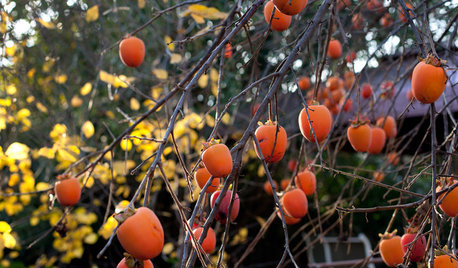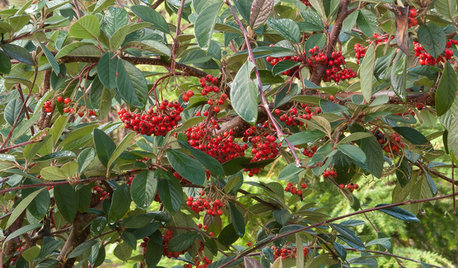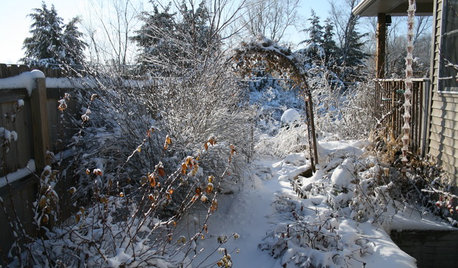Cedar Waxwings
mulberryknob
11 years ago
Related Stories

GARDENING GUIDESPlant Black Cherry Trees for the Birds and Bees
Plant Prunus serotina in the Central and Eastern U.S. for spring flowers, interesting bark and beautiful fall color
Full Story
GARDENING FOR BIRDSFeed the Birds: 6 Plants for Abundant Winter Berries
Be kind to your fair feathered friends during lean food times by planting a shrub or tree loaded with nutritious snacks
Full Story
GARDENING GUIDESGarden-Friendly Native Alternatives to Overplanted Exotics
There are lots of gorgeous, wildlife-friendly native plants ready to make an appearance in your garden
Full Story
EDIBLE GARDENSGreat Design Plant: Persimmon
Combining beautiful fruit, vivid fall leaves and low maintenance, this tree is a winner in the garden
Full Story
GARDENING GUIDESGreat Design Plant: Cotoneaster Lacteus
Parney cotoneaster is a low-maintenance, four-season shrub that offers great foliage, spring flowers and jewel-like berries
Full Story
LIFE6 Ways to Beat the Winter Blahs
Snow and dark days dampening your spirits? These ideas will have you looking on the bright side
Full Story
GARDENING GUIDESHow to Stop Worrying and Start Loving Clay Soil
Clay has many more benefits than you might imagine
Full Story
EDIBLE GARDENSHow to Grow 10 Favorite Fruit Trees at Home
Plant a mini orchard in fall, winter or early spring to enjoy fresh-off-the-tree fruit the following year
Full Story
GARDENING GUIDES13 North American Backyard Birds to Know
Find out about these enchanting native species and learn how to attract them to your yard
Full Story
GARDENING GUIDESGreat Design Plant: Amelanchier Signals Spring With Airy White Blooms
With roughly 20 species of serviceberry native to the U.S., bees can feed on the early-season blooms while birds enjoy the summer berries
Full StoryMore Discussions






Okiedawn OK Zone 7
susanlynne48
Related Professionals
Clemson Landscape Architects & Landscape Designers · Hyattsville Landscape Architects & Landscape Designers · Marco Island Landscape Architects & Landscape Designers · Seabrook Landscape Architects & Landscape Designers · Cerritos Landscape Contractors · Cordele Landscape Contractors · Dudley Landscape Contractors · Fridley Landscape Contractors · Galveston Landscape Contractors · Hawaii Landscape Contractors · Lake Worth Landscape Contractors · Baileys Crossroads Landscape Contractors · Cincinnati Decks, Patios & Outdoor Enclosures · Green Bay Decks, Patios & Outdoor Enclosures · Mastic Decks, Patios & Outdoor EnclosuresmulberryknobOriginal Author
helenh
Okiedawn OK Zone 7
susanlynne48